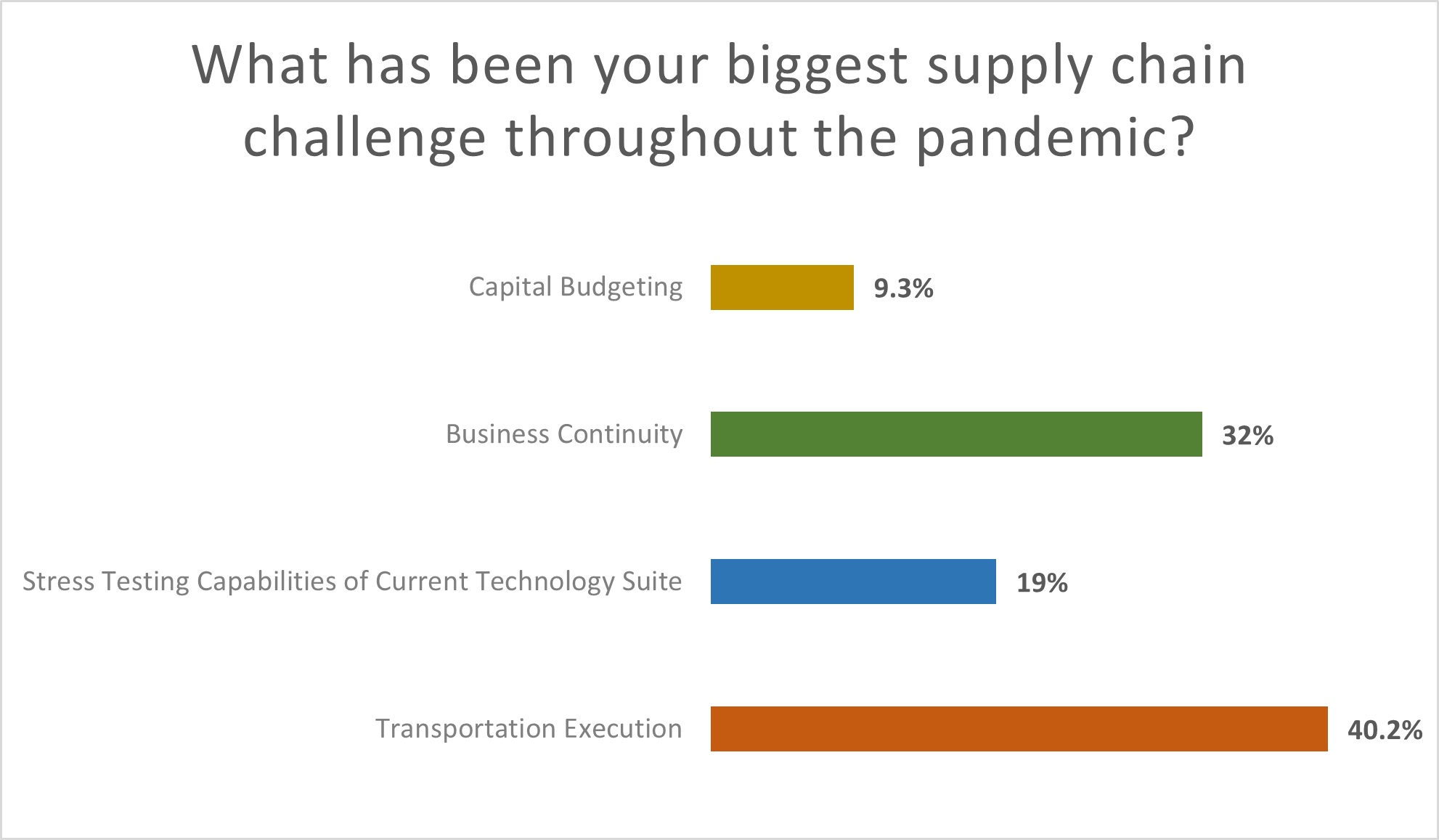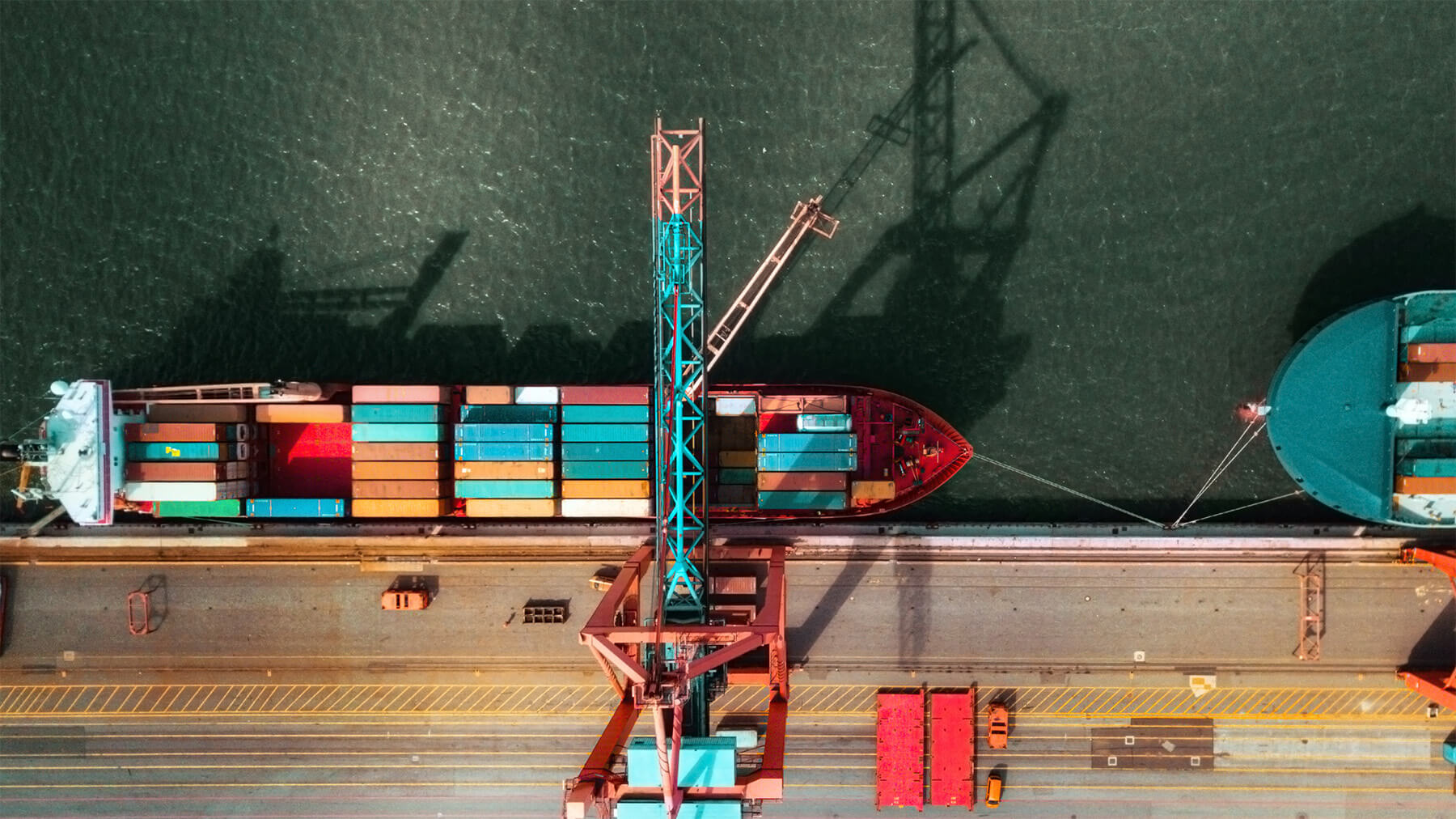More than halfway into a volatile and evolving year, fright market experts joined project44 for a webinar last week to explore what shippers and logistics service providers (LSPs) should know about current market conditions.
Gene Seroka, Executive Director of the Port of Los AngelesFreightWaves joined project44’s Head of Global Partnerships Tommy Barnes for the discussion.
The panel focused on three areas: truckload, intermodal, and ports. An overview of the discussion is included below and you can find the full recording here.
Supply Chains are Struggling with Transportation Execution
It goes without saying that this year has been full of uncertainty and disruption for the entire world. Supply chains have faced significant challenges related to the global pandemic as well as evolving trade tensions. To kickoff the webinar, the panelists wanted to get an idea of the audience’s biggest challenges throughout the pandemic.
The possible responses included capital budgeting, business continuity, stress testing capabilities of their technology, and transportation execution. While most supply chains are probably dealing with pain points and roadblocks in all of these areas, transportation execution rose to the top as the biggest challenge (40.2%), followed by business continuity (32%).

Truckload Volatility Causing Transportation Uncertainty
With vast amounts of transportation data, FreightWaves closely monitors industry shifts and trends. JT Engstrom and Seth Holm walked the audience through truckload tender volumes and rejections to provide an overview of how the market has changed this year.
With a lot of volatility in volumes throughout the year, the panelists weren’t surprised to see that the audience is concerned with transportation execution.
“What’s interesting this year, which we’ve really not seen before, is the tremendous amounts of volatility in the tender market. We’ve seen three peaks and three troughs in the first half of the year, which is unprecedented. That volatility is what makes the execution market as challenging as it has been,” said Holm.
The panelists discussed how the pandemic isn’t the only cause for current market pressures. Engstrom explained other factors that are at play in the market, “Not only did Covid occur, but so did an energy crisis at the beginning of the year. With that in mind, you had a multi-pronged economic impact that directly impacts truckload. It’s the driving force of what’s exacerbating all of this volatility.”
Of course, this disruption isn’t consistent across industries. “You see a significant shift where consumer-exposed industries are seeing reasonable volumes, where the industrial economy in the first half of the year has been incredibly pressured and challenged,” said Engstrom.
Keeping Ports Moving
A lot of imports have been coming in through the West Coast ports because it’s less expensive to ship from China to the West Coast than the East Coast. Gene Seroka, Executive Director of the Port of Los Angeles — the busiest seaport in the Western Hemisphere — shared insight into what they’ve been seeing at the port.
“We’ve seen some industries do okay during Covid-19, mainly the big box retailers, home improvement stores, and hardware stores,” said Seroka.
With 90% of the world’s trade moving by water, ports in the U.S. play a critical role in the economy. Not only in the goods that they move through the port, but in the jobs they create. The ports have worked to keep cargo moving.
“The port’s been operating at about 85% of its normal volume during the pandemic,” said Seroka. “We’re starting to see an uptick in cargo volume, mainly replenishment within the omnichannel distribution network.”
Seroka also shared opportunities for how export might help support the economy, including areas like agriculture, manufacturing, and automotive.
Helping with Pandemic Response Logistics
In addition to keeping the port moving for businesses, Seroka was appointed Chief Logistics Officer for the city of Los Angeles in March to help get personal protective equipment (PPE) to frontline medical workers.
“The first thing that comes to mind is uncertainty. Whether that be economically, the uncertainty of our own health, the health of our businesses, and how we were going to convey goods. At the same time, we saw an opportunity to jump into action,” said Seroka.
Their goals were to expedite product through the airport and seaport, develop a direct manufacturing relationship, and help firms convert their factories to support the medical community. Through these efforts, the Port of LA has been able to distribute PPE to more than 30 hospitals in the LA area.
For the full overview of what’s happening in the market, watch the webinar recording.



